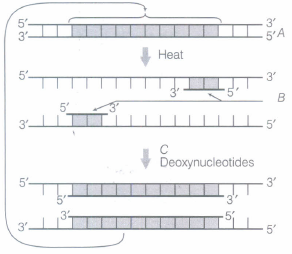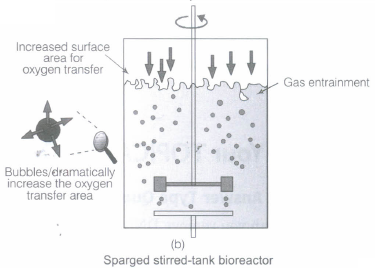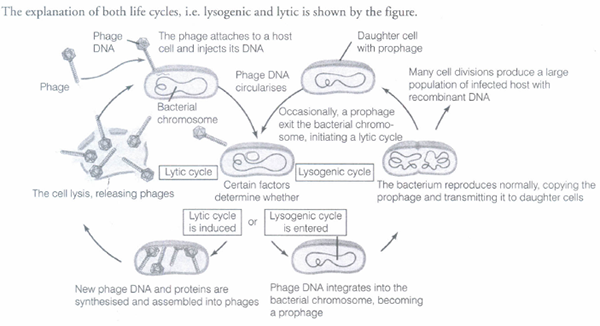CBSE 12th Standard Biology Subject Biotechnology Principles and Processes Ncert Exemplar 3 Marks Questions 2021
By QB365 on 25 May, 2021
QB365 Provides the updated NCERT Examplar Questions for Class 12 Biology, and also provide the detail solution for each and every ncert examplar questions , QB365 will give all kind of study materials will help to get more marks
QB365 - Question Bank Software
CBSE 12th Standard Biology Subject Biotechnology Principles and Processes Ncert Exemplar 3 Marks Questions 2021
12th Standard CBSE
-
Reg.No. :
Biology
-
A schematic representation of Polymerase Chain Reaction (PCR) up to the extension stage is given below. Give answers of the following questions.

(i) Name the process A.
(ii) Identify B
(iii) Identify C and mention its importance in PCR.(a) -
How bacterial cells are made competent to take up DNA?
(a) -
Draw a labelled sketch of sparged-stirred tank bioreactor. Write its application.
(a) -
Agrobacterium tumifaciens is a soil bacterium; known as a plant pathogen as well a plasmid vector for plant transformation (genetic engineering). Enlist other bacterial plant pathogens or their relatives that have widely used in agriculture and food production.
(a) -
Bacteriophages are virus infecting bacteria, that are used as vectors because of their high copy number.
Lambda phage is a non-contractile bacteriophage used as vector that follows two life cycle, lysogenic and lytic. Explain, both the life cycles with the help of a diagram(a)
5 Marks
*****************************************
CBSE 12th Standard Biology Subject Biotechnology Principles and Processes Ncert Exemplar 3 Marks Questions 2021 Answer Keys
-
(i) A - Denaturation process
(ii) B - Primers
(iii) C - Taq DNA polymerase. Taq polymerase is a thermostable enzyme, which remains active during the high temperature and incduces denaturation of DNA -
Since, DNA is a hydrophilic molecule, it cannot pass through the cell membranes. In order to force bacteria to take up the plasmid, the bacterial cells must first be made competent to take up DNA. This is done by treating them with a specific concentration of a divalent cation such as calcium, which increases the efficiency with which DNA enters the bacterium through the pores in its cell wall.
Recombinant DNA can then be forced into such cells by incubating the cells with recombinant DNA on ice, followed by placing them briefly at 42 C (heat shock) , and then putting them back on ice. This enable the bacteria to take up the recombinant DNA. -

Application These bioreactors are used to produce large quantities of products enzymes, etc., using microbial, plant, animal of human cells. -
(i) Some useful strains of Agrobacterium tumefaciens (known to cause crown gall diseases) are:
(a) Agrobacterium radiabacter K84 is useful for biological control.
(b) Agrobacterium sp. M4 is a source of an experimental drug for cholesterol degradation.
(c) Agrobacterium radiobacter J14 helps in biodegradation of Atrazine, an agricultural herbicide.
(ii) Erwinia amylovora is a causative organism of fire blight disease but also serves as an elicitor of disease resistance in plants.
(iii) Xanthomonas campestris a causative organism of black rot, is also a source of xanthum gum. It is a polysaccharide used in agriculture, cosmetics and pharmaceuticals. -

5 Marks






































